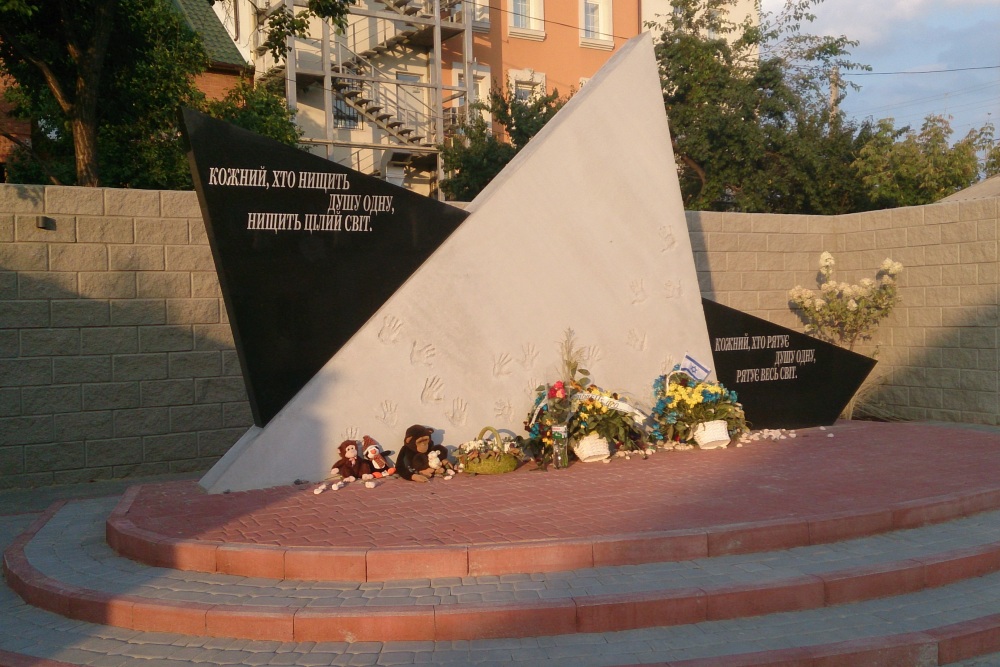These August days, we recall another episode of Nazi crimes that took place in Ukraine, in the Kyiv region. Even before the mass executions began in the city of Kamianets-Podilskyi (August 26–28, 1941) and Kyiv (September 29–30, 1941), no less resonant events took place.
The Nazi occupation of the city of Bila Tserkva lasted for over 900 days and ended only on January 4, 1944. A prisoner of war camp was established in the city, where about 4,500 people were shot and over 3,000 were deported to the Third Reich during July 1941-February 1942. But a notable specificity of the events in Bila Tserkva was the first recorded case of the shooting of one of the most vulnerable categories of the population - children of all ages.
As in most cities and towns in Ukraine, the persecution of the Jews of Bila Tserkva began with registration. Mass shootings began on August 15, which was associated with the arrival of the advanced detachment of Sonderkommando 4a (part of Einsatzgruppe C, led by P. Blobel) in the city. The detachment's goal was to “process” the territory, which included “searching for Soviet spies, arresting Bandera members, identifying unwanted prisoners (Jews and commissars) in prisoner-of-war camps, and exterminating the remaining Jewish population.” According to one of the participants, about 700 Jews (including women, children, and the elderly) were gathered on the 3rd site behind the local market under the pretext of “cleaning the city streets” and shot by the Nazis.
Various sources testify to the practice of separating men from women and children used by the SS (especially during the first executions). Thus, in August 1941 (the exact date is not specified), a group of men were shot at the end of Rokytnianska Street (now Shevchenko Street), and a certain number of women and children were shot in the Tomylivka Forest on the outskirts of the city. This fact is evidenced by the remains of 29 women and children with bullet-riddled skulls, fragments of women's hair, combs, as well as German cartridge cases, etc., found during the excavation of graves in 1971.
The extermination actions, on the orders of SS Obersturmführer August Hefner, were carried out by the SS and the local security police. After the execution of their parents, the children were kept in one house in terrible conditions, without food and water, from August 19. German soldiers of the 295th Infantry Division, stationed nearby, who could not sleep because of the children's sobbing, drew the attention of military chaplains to them. The latter saw and heard terrible information: the children were being taken away to be shot. The priests reported this to the head of the operational department of the 295th Infantry Division, Lieutenant Colonel Helmut Grosskurt, who forbade the removal of the remaining children and requested an analysis of the situation. In accordance with a meeting held on August 21 between Nazi figures, a decision was made to shoot the children. At the same time, the SS tried in every possible way to evade responsibility and let the other side carry out this terrible crime – particularly the local police. The confusing testimonies of the German side (A. Hefner, P. Blobel) do not provide a complete picture of who directly carried out this ruthless action, although the presence and participation in organizational matters of Ukrainian “volunteers” is confirmed by numerous reports from both sides. According to Nazi report No. 86 dated September 17, 1941, 68 people were shot in Bila Tserkva “in the further course of the actions”. Probably, these were Jewish children.
The infamous symbol of the tragedy in Bila Tserkva was the fate of the children of orphanages. According to documents, there were 3 such homes in the city at that time, housing 282 children of various ages (as of mid-1942). It is known that the administration of orphanage No. 1 (“Children’s House”), risking their own lives, saved 9 Jewish children, giving them Ukrainian names and hiding them throughout the entire period of occupation. A similar situation existed in another orphanage No. 2. Things developed completely differently with home No. 3, where, as of mid-July 1941, there were about 150 children. In August 1941, the institution’s management selected and delivered six Jewish children aged 9 to 11 to the place of imprisonment, who were later executed. According to other sources, during September 1941 – October 1942, “23 older children from the orphanage were sent to forced labor in Germany.”
In late 1941 and early 1942, the first executions of local “Party-Soviet activists” who were accused of arson in the city center took place. Approximately 100 people were registered, imprisoned (including at the expense of Ukrainians who had blood ties to Jews) and soon shot at the 7th site; the total number of those shot in those few days was about 500 people.
In fact, the executions of the local Jewish population took place throughout the entire period of occupation. In addition to the SS and SD teams, the field gendarmerie, Wehrmacht units, and the local Ukrainian police were involved in the executions.
Due to the “traditional” concealment of the real scale of the extermination of the Jewish population during the Soviet regime, some aspects of the tragedies, in Bila Tserkva, remain to be fully established.
Iryna Radchenko

